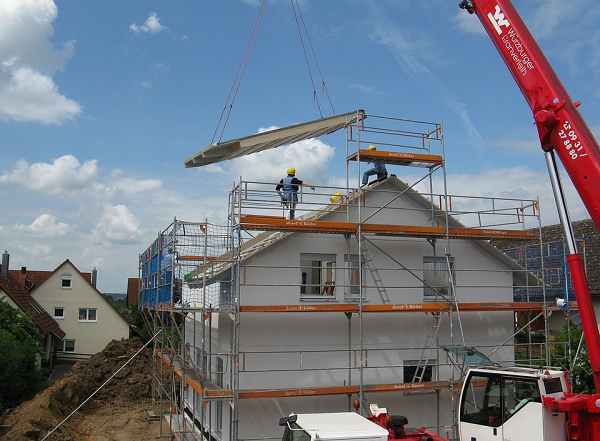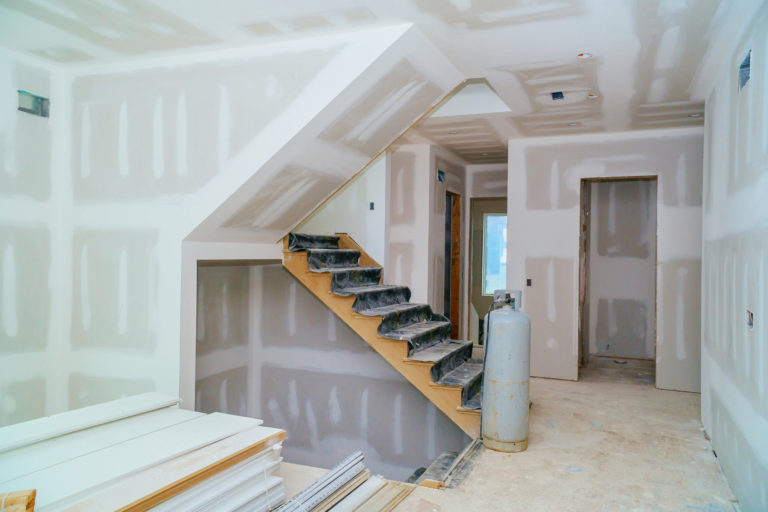Building Construction Terminologies: Know What Each Term Means
Over the years, the same building construction terminologies have been passed down from generation to generation. Even with technological advancement (and modernized building systems), construction terms have remained the same.
Every first-time homeowner planning to build a new house must know construction terminologies. It helps understand what each term means and what it indicates. Experienced builders and tradesmen can tell if you are conversant with building construction terms and whether you know what each means.
As in all professions, communicating using professional terms is vital if you plan to build a new home. Knowing construction terms tells your builder that you are smart, and he cannot confuse you deliberately, as a few unscrupulous ones do.
So, when architects, builders, and tradesmen speak their construction jargon, you will understand them. This removes the possibility of misconstruing issues that can affect the progress of work and its overall quality.

Builders Terms and What They Indicate
This article is a straightforward outline of building construction terminologies used by builders and consultants in the industry. It includes expanding and extending the knowledge of construction and options available to help owner-builders understand the project.
The listed terms are used from the foundation to the final finishing stage of building a house.
Setting Out
This is the first stage of work – the pre-construction phase. It involves mapping out the configuration of the foundation on the plot of land with the aid of measuring tapes, rails, pegs and strings.
Setting out is carried out by following the dimensions of design blueprints produced by an architect or purchased from stock plans retailers. It is done using a tripod-mounted telescope and a long measuring tape. The tripod allows a determined height to be transferred from a datum to pegs around the building site.
Sight rails or pegs are set into the ground and must be set at a minimum of one metre up above the final top of the ground slab. The nails on the sides of these peg profiles form a stringed line that stretches out where the brickwork face will be positioned.
The building’s shape can be seen at this stage, and with ‘setting out’ in place, the foundation works can commence.
Foundation
This is the structure’s concrete footing or base. It is below the ground level and transfers, holds and distributes the building’s weight.
In building construction terminologies, foundations are terms used to describe the concrete footing of the house and is the structure’s base. Most building foundations are constructed using substructure cavity masonry block work. This is the most common form of foundation work.
Other types of building foundation works include:
- Mass concrete trench-filled foundation.
- A reinforced concrete raft foundation is used where the soil has poor load-bearing qualities.
There are groundwork sub-contractors who do the digging, excavating, and concrete works required. They lay the necessary plumbing pipes and then build the ground floor concrete slab.
Floor Structure
The floor structure is the flat horizontal part of the building that we walk on, erect interior walls, and place major and minor objects on. It consists of the ground, first, and subsequent floor levels.
Ground floor: After the foundation comes the ground floor construction. They can be any of the following:
- In situ concrete slab built on sand and hard-core materials (construction site waste – stones, gravel, crushed rocks, concrete rubble, colliery spoils, and broken bricks).
- Suspended timber floors, built with a ventilation void underneath (to help prevent humidity build-up, timber rot, and insect attack).
- Suspended concrete beam and blocks with some ventilated void beneath.
A damp-proof membrane (DPM) must be installed in the three ground-floor structures. DPM is a moisture barrier.
First floor: The composition of the first floor is constructed using any of the following systems:
- Concrete beams and blocks. These reduce (considerably) noise transmission when the pre-cast concrete system is used to construct the first floor. Using blocks and concrete beams forms a better resistance to both fire and sound. And so, a better alternative to using timber joists.
- Timber joists. They are easier to install and have sufficient void spaces for fitting in plumbing pipes and electrical wiring conduits. Timber-structured first floors give a level floor that allows for perfect installations of plasterboard ceilings on the ground floor. It also allows a smooth, flat surface to receive floorboards, plywood, chipboard, or hardwood floor finishes. With this option, insulation against noise and fire protection materials can be added to the timber structures of the first floor.
Due to weight penalties, concrete first floors are only constructed if the building will be built with load-bearing masonry. With timber frame homes, the floor carries only the weight of the timber joists.
Roof Carcass
The roof carcass is the timber framework that forms the roof’s shape and structure. Its structural construction can be either of the following:
- Trussed rafters (fast and easy to install) are prefabricated structural components that provide a structural framework to support the roof.
- The traditional cut roof allows for a relatively unobstructed and functional attic space, an added advantage to the building. Attics can be used as a work-from-home office, bedroom, playroom, study, or storage facilities.
Roof Covering
Also referred to as the roof, it’s the outer covering installed on the roof carcass. Roofing installation completes the roof structure and protects the home from the elements.
There are a variety of roofing types and styles, including:
- Roof tiles are produced from clay or concrete. Clay tiles are more expensive, come in varying sizes and profiles, and range from smaller plain tiles to larger pan clay tiles.
- Slates are popularly used in residential construction. The more expensive types are the ones made from natural quarry stones. Other varieties are synthetic composite, bituminous, and fibre cement slates.
- Aluminium long-span roof covering comes with ridges and verges (edge of the roof slope which extends beyond the gable). It is installed by clipping aluminium sheets onto the roof carcass with special screws, caps, and other fixings.
- Thatched roofs have been around for centuries and are still used in rural areas. Today, modern thatched roofs are used in recreational areas like beachside bars and holiday resorts. It is also used in homes as decorative features for gardens and outdoor spaces.
Exterior Walls
Exterior walls form the outer shell. They are fixed upright structures commonly constructed of wood, stone, brick, stucco, and metal. They generally come in the following forms:
- Masonry cavity wall construction is a concrete block inner leaf with an outer layer of facing bricks, plain tiles, timber boarding or simple plain mortar rendering.
- Timber frame walls consist of a masonry outer leaf like facing bricks and an inner timber framework. The framework cavity can be filled with a quilted or rigid-type insulation material.
Interior Walls (Partition Walls)
In building construction terminologies, they are referred to as partition walls. Interior walls are upright partitioning structures (floor to ceiling) formed to create rooms, spaces, and other areas within the enclosed boundary of the external wall.
Generally speaking, in contemporary homes, partition walls are not load-bearing and do not carry any structural weight from the first floor or the roof. This affords a high flexibility as to where internal walls can be built.

Ventilation
This is the means of supplying fresh air to open spaces or rooms within a building structure. A perfect ventilation system allows clean and oxygenated air into enclosed spaces, and well-placed window openings are a good source of fresh air. The most ideal window placement is where they are installed on opposite walls, resulting in what is called cross ventilation. This form of ventilation is essential, especially in the summer months in hot regions.
Other ventilation systems are:
- Mechanical fan ventilation (air expellers for bathrooms and kitchens).
- Trickle vents (for windows and doors).
- Eaves and gable vents (for roof voids) help to avoid a build-up of warm and stale air within the roof structure.
- Smoke ventilation system that helps to alleviate the thick smoke build-up from fire breakouts.
- Supply ventilation system that supplies external oxygen particles through a fan (bedrooms and living areas).